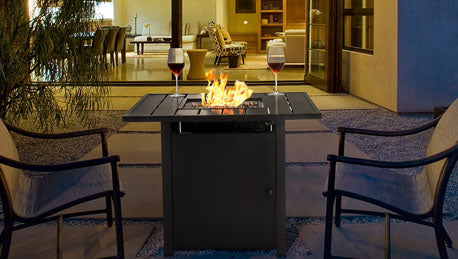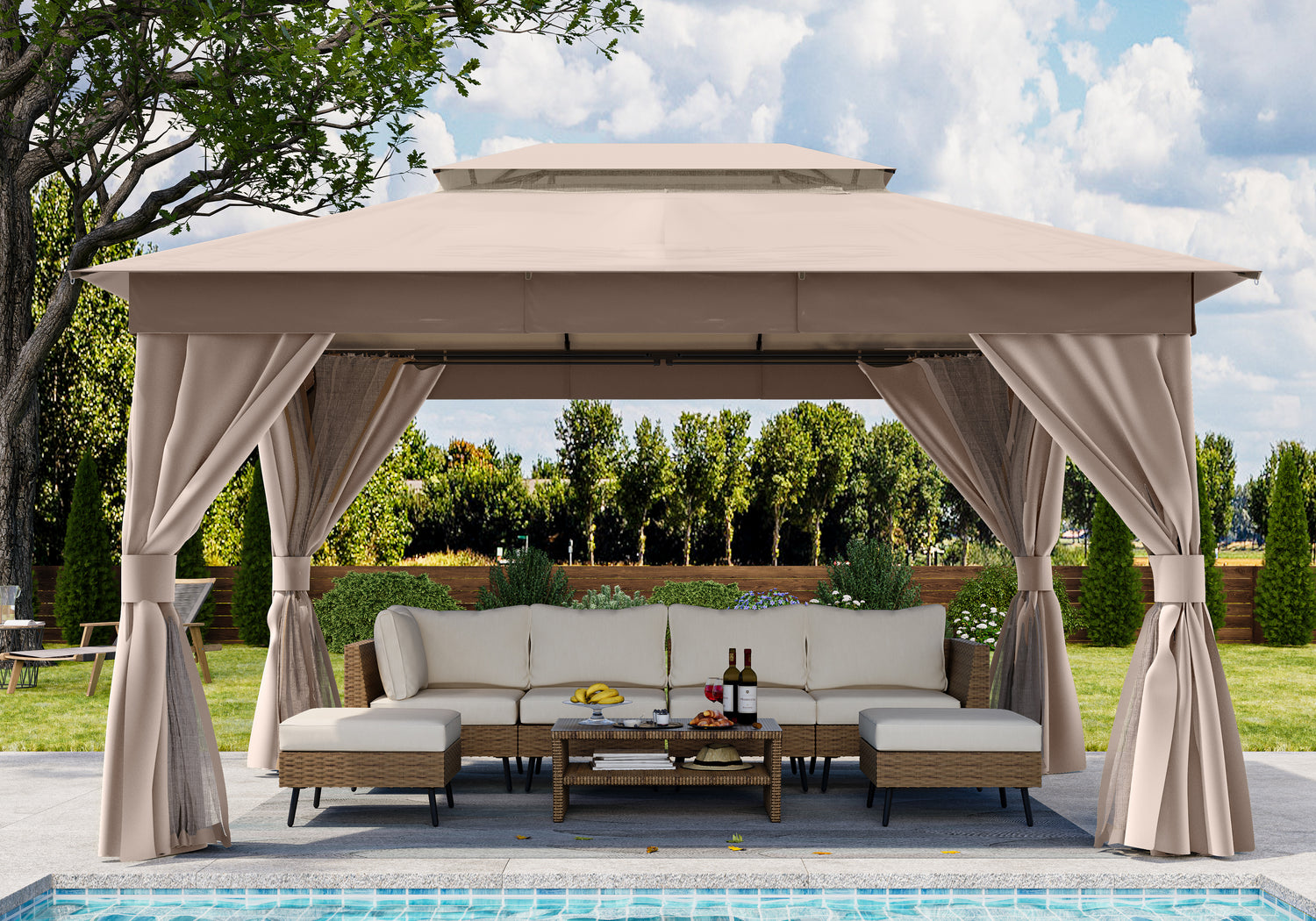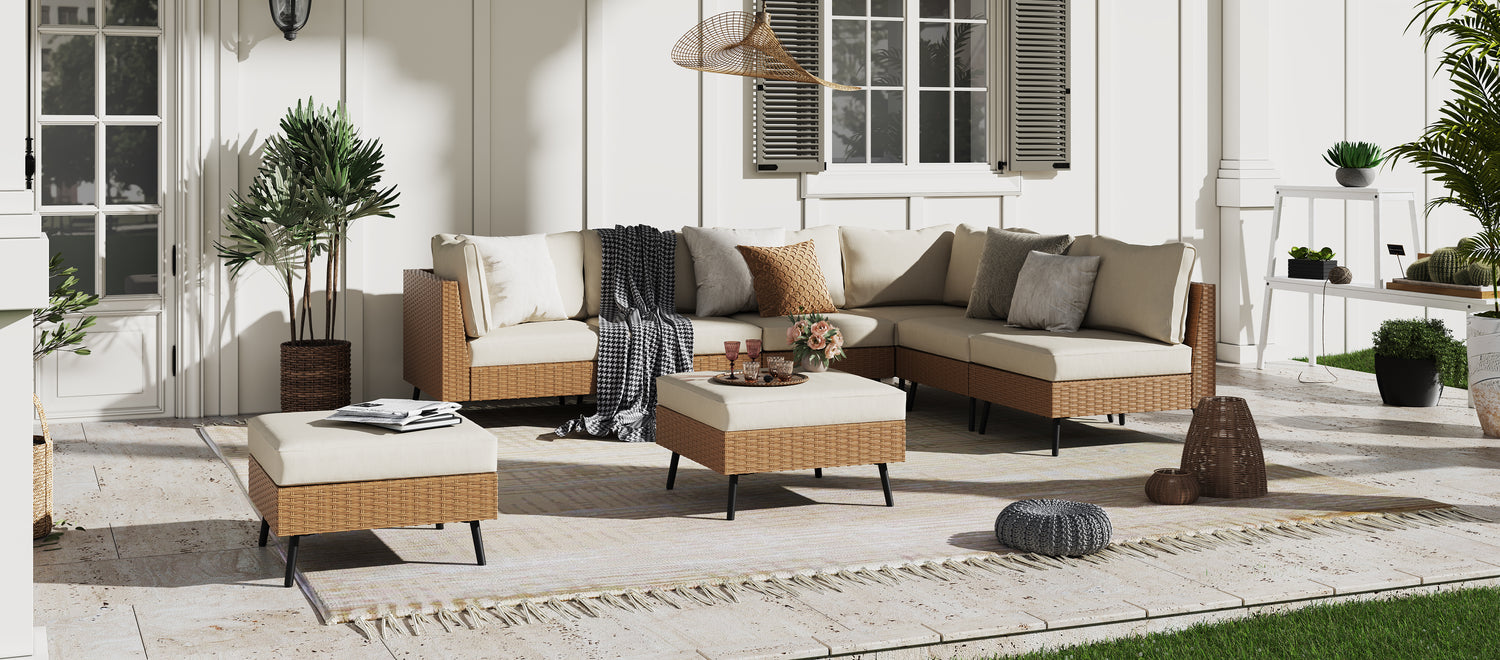Everyone knows how much we adore patio heaters. They're fantastic assets because they enable you to enjoy your patio when it cools down. It implies you'll be able to use your increased living space for a more extended period. Read more to know how to light a patio heater?
Although many patio heaters have an automated start, you can occasionally fail to light a patio heater. If the automatic ignition system fails, you must know how to light patio heater manually.
The Control Button
The first thing you should do is set the control knob to the pilot position. You will need to flip it 45 degrees counterclockwise to accomplish this. If you have any questions, see your patio heater manual.
Turn On the Patio Heater.
You'll need to fire the patio heater now that you've turned the knob to the pilot position.
You can use any lighter on hand, but a candle lighter is the safest approach to avoid burning your fingertips. There should be a hole for lighting the match, into which you can insert the candle lighter. Light the candle lighter after it's in a spot, and your patio heater should start to heat up.
Determine the Intensity
You can now adjust the strength of the patio heater with the gas control knob. Depending on how much heat you wish to emit, you can set the knob too high.
Use Caution
Before you start your patio heater, you must take some precautions.
While the patio heater may glow red and emit heat, it is powered by fire. You mustn't have any flammable goods nearby, as they can catch fire.
Furthermore, the fire remains blazing because the patio heater should be powered by gas or propane. Before light a patio heater, make sure that the gas or propane tank is connected.
Troubleshooting
Manually, light a patio heater, but you'll eventually want a more permanent solution. Here are some of the most typical reasons for failing to light a patio heater.
Your petrol tank is not connected:
Your patio heater will not light up if your gas or propane tank has become unplugged. Check the connections and reattach the tank before attempting again.
You're out of gas:
If you're out of gas, your patio heater won't light. It requires gas, so you'll need to purchase gas before you light a patio heater and turn it on.
Your gas supply pipe is leaking:
After turning on your patio heater, turn it off straight away if you smell gas. A leak in your gas distribution pipe can result in a fire.
The gas regulator switch is turned off:
The gas regulator regulates the heat and links the gas delivery pipe to the pipe that leads up to the burner. If it stops operating, the switch may be turned off. Another option is that it was accidentally turned off.
Your gas pipe is clogged:
If your gas pipe becomes clogged, you must remove it and clean it.
The burner is obstructed:
Your burner should be clear and free of debris such as leaves and sticks. You should double-check it and the patio heater clean-out process is mandatory.
The bug screen is clogged:
Your bug screen should be clear and debris-free as well. Examine it and, if necessary, clean it.
Upkeep of Patio Heaters
Your patio heater, like other equipment, requires maintenance to keep it in good working order. Everything you need to know about care and troubleshooting is covered in your manual.
Tiny spiders or bugs may create homes inside your patio heater if you leave it lying for an extended period (especially if you've removed the spider webs).
Because this is relatively common, it is good to clean your patio heater before using it properly. Most of the screens on the patio heater can be readily removed and cleaned.
Make a plan to clean your patio once a year, and if you are going to leave it for an extended period between usages, you will need to clean it.
Is it Dangerous to light a patio heater?
Let's talk about fire safety: is it risky to light a patio heater? The answer is simple: no, if applied correctly. However, as with most things involving gas and flame, you should be cautious when utilizing a patio heater. You see, whichever patio heater you choose usually comes with detailed instructions and an owner's handbook. If you follow the installation instructions correctly, you will go a long way toward avoiding undesirable outcomes. There's no doubt that you'll be toasty and safe if you use the patio heater in the way the maker intended.
Patio Heater Safety
We'll let you in on a little secret: most patio heater manuals include nearly identical information. While the specifics may alter, the essential components will mostly remain the same. No matter the patio heater you purchase, your precautions to stay safe will stay the same. What exactly are those steps, you ask?
We'll let you in on a little secret: most patio heater manuals include nearly identical information. While the specifics may alter, the essential components will mostly remain the same. No matter the patio heater you purchase, the precautions you take to stay safe will stay the same. What exactly are those steps, you ask?
- Remove all impediments.
- Check for correct clearance.
- Examine the safety features.
- Keep children away from the unit.
- Avoid tiling over the patio heater.
Following those measures will keep you safe and prevent any potential accidents.
Clearance around Patio Heaters
The amount of space required around your patio heater unit is solely determined by its BTU output (the amount of energy your patio heater produces while operating). Said, the more the BTUs produced by your patio heater, the more heat it generates for indoor or outdoor use. Furthermore, the calculation differs depending on whether you use a gas or electric patio heater.
Always follow the manufacturer's recommendations to avoid sounding like a broken record. We can, however, offer you a reasonable answer without knowing your specific patio heater model or outside scenario. Let's have a look at the clearance required for outdoor patio heaters.
Outdoor Patio Heater Clearance
You must check the clearance for the specific heater model (this is also true when you store your patio heater). It will be a problem if you have a large free-standing outdoor heater that brushes up against the top of your patio covering.
To allow at least 30 inches of clearing room on all four sides as a general rule. You should also allow for an additional 30 inches of clearance above the outdoor patio heater. It should be at least 30 inches away from any permanent structures, but it should also be free from hanging plants, bird feeders, or other items.
Indoor Patio Heater Clearance
As previously indicated, you should avoid bringing gas patio heaters indoors. It is permissible if you have an electric patio heater and want to place it indoors. On the other hand, indoor patio heaters have a more complex clearance formula. Among the contributing factors are:
- The heater's dimensions
- The power
- What materials are in the vicinity of your heater?
- The room's dimensions
So, are patio heaters risky? Not if you're careful, offer adequate clearance, and buy a unit with appropriate safety measures. If you're not attentive, aren't using the heater correctly, or disregard the manufacturer's recommendations, it can soon become dangerous. Don't be a moron and respect the flame!
Ventilation
If an awning or a roof shades your patio, there should be plenty of ventilation. However, if your deck is enclosed to restrict airflow, this can be hazardous. When it comes to outdoor heaters, ventilation and clearance are the most important considerations.
Finally, most heaters are designed to tolerate certain weather conditions. On the other hand, the wind is the most damaging weather to an outdoor heater.
Outside heaters and wind do not get along, and a powerful gust can easily knock an outdoor heater over (we wrote a handy guide to keeping your patio heater from tipping over). If this occurs, your outdoor heater may be rendered inoperable. If you're expecting wind, ensure your heater is protected from the impending turbulence.
Propane heaters are connected to liquid propane (LP) fuel tank via a hose and a regulator to control the gas pressure. Push-button to light a patio heater is available with an electric pilot ignition system. The heat control knob also functions as a gas control valve, allowing propane to be released to the burner. These controls allow you to start a propane heater in less than a minute when used in conjunction.
Conclusion
If you're planning to spend time on your patio on a more incredible day, your patio heater can help. If it does not appear to be working, try turning it on manually. If you cannot do so, inspect the gas tank, the gas lines, and the inside for evidence of tiny spiders or other bugs forming a nest. A thorough cleaning can sometimes do the trick and get you back beneath the warmth of your heater so you can enjoy your patio.






